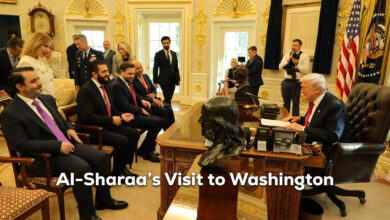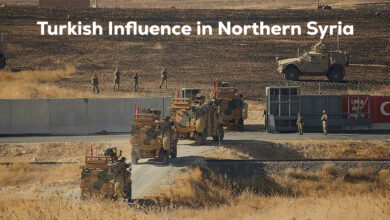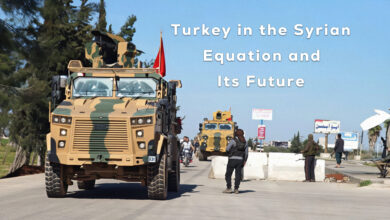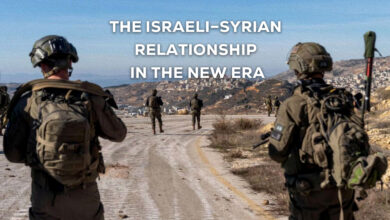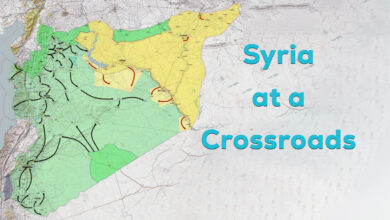Iraqi elections.. implications of results and possible alliances

The High Electoral Commission in Iraq announced the results of the recent Iraqi legislative elections held on October 10, 2021 which represent the fifth electoral track in the Iraqi electoral process since the 2005 elections. These elections are considered the most controversial among the previous ones; As it came in response to the massive cross-sectarian popular protests that swept Iraq in October 2019, and demanded the resignation of Adel Abdul-Mahdi’s government and the call for early legislative elections; As a result of the deterioration of living conditions, services and infrastructure, and the spread of corruption, in addition to the monopoly of power by traditional political parties and blocs that did not succeed in addressing the acute problems facing citizens on the one hand, and limited their attention to monopolizing influence and political and economic control through some of their armed militias on the other, other than their dependence – especially the Shiite parties with religious reference – on the Iranian regional project inside Iraq on the third hand. Hence, all of these problems represented important inputs that formed the public awareness of the Iraqis about the importance of change and the necessity for Iraq to get out of the Iranian influence.
Although the October 2019 popular movement – the October Movement – did not express itself strongly through large political formations such as Shiite, Sunni and Kurdish parties, the most present expression of the popular rejection of traditional parties, especially those affiliated with Iran and its policies, came from the total of voters who decided to punish those parties and their armed militias led by the Popular Mobilization Forces, which was represented in the elections by the Fatah Alliance led by Hadi al-Amiri, at a times when the Sadrist Movement led the results of the electoral scene, reaping this as a result of its active support for the popular movement and its demands in fighting corruption and addressing crises suffered by the Iraqi people.
Elections’ results
The voter turnout – according to what was announced by the High Commission – was 41%, which is lower than in the 2018 elections, which was recorded at the time 43%. It is noted here that the 2018 elections in which the Alliance Towards Reforms led by the Sadrist Movement led the elections’ result with 52 seats, then Fatah Alliance with 48 seats, and after that the Victory Alliance headed by Haider al-Abadi with 42 seats. Although the results of the 2018 elections give the Sadrist Movement the preference for choosing the prime minister, but in light of internal and external “consensus”, the former prime minister, Adel Abdul-Mahdi, was chosen after he was nominated by the Bena Bloc and the Reform Bloc – which includes Wisdom, Victory and Alliance Towards Reforms – bypassing parliamentary dilemmas resulting from the formation of the largest parliamentary bloc – 165 seats – as the largest policy mechanism in choosing the prime minister through the largest parliamentary bloc.
As for the results of the current elections – October 2021 – the Sadrist Movement preserved its lead, as it came first, obtaining 73 seats, an increase of 21 seats over the previous elections. It is noted that the Sadrist Movement entered the last elections alone without allying with other political forces, unlike the 2018 elections. Followed by the Sunni Advance Alliance of the Parliament Speaker Muhammad al-Halbousi, which won 41 seats. The State of Law Coalition of the former Prime Minister Nuri al-Maliki came in third place with 37 seats, and the Kurdistan Democratic Party won 32 seats, The Kurdistan Alliance won 17 seats, the Sunni Azm Alliance got 15 seats, while Hadi Al-Omari’s Fatah Alliance won 14 seats, losing 34 seats from the previous elections. Also, the National Wisdom Movement led by Ammar al-Hakim and Victory Alliance led by former prime minister Haider al-Abadi got four seats, while the Forces for Change (the Tishreen Movement) won 9 seats, which were won by the Extension Movement.
According to these results, the Sadrist Movement will be able to make parliamentary alliances that will enable it to form the largest parliamentary bloc to choose the prime minister and form the new government. But at the same time, it will be required to deal with its most prominent opponents from the Dawa Party of former Prime Minister Nuri al-Maliki; Where his party came third in the election results, and al-Maliki and the hawks of the Dawa Party in general enjoy Iran’s support, with varying degrees of support. Since their formation in 2016, the Popular Mobilization and its political currents have enjoyed a high degree of Iranian political and material support against the background of its participation in the war against ISIS, and until the date of the last elections. This is the same support that made these forces lose their electoral votes; Because it worked to use their victories over ISIS against the state, and it impeded many attempts at political and security reform, and it absolutely refused to hand over their weapons to the official military institution.
Intrinsic and extrinsic meanings
The previous results bear many indications in the upcoming Iraqi political scene, whose map of political interactions will be based on the interactions of the winning forces in the recent elections with the understandings and consensus of forming the government and choosing the new prime minister, and they can be monitored in the following points:
First, is that Iraq is on the verge of a political stage in which it is moving away from the state of the dominant Iranian influence on its internal and external policies, but this does not mean a complete “disengagement” between it and the Shiite political forces, because, in the end, the Sadrist Movement is one of the components of the traditional Shiite political forces with a religious authority, and also one of the political forces that had a military arm. The nature of its interference in political life has evolved, starting from the Mahdi Army to the Saraya al-Salam militias that at one point, enjoyed the support of Iran, and that this support has declined since Saraya al-Salam withdrew from the Popular Mobilization Forces in 2017, when its leader Muqtada al-Sadr demanded it to hand over its weapons to the state security institution. Here, the Sadrist Movement turned to work more in the Iraqi street to support many popular protest movements that culminated in October 2019. This is in contrast to its speeches and resonant statements about corruption and the need to track down the corrupt. This was considered by the Iraqi people as a reformist current in support of their aspirations for the desired change, especially after their repeated apologies to the Iraqi people for their years of political work in Parliament without contributing to an actual treatment of their problems. However, questions here about the ability of these new balances to cross Iraq through its internal crises and its external links with the Iranian regional project remain open to all possibilities.
Second, the possibility of the absence of a number of traditional Shiite political forces from the next formation of the government, specifically the Fatah Movement by Hadi al-Amiri, al-Hikma Movement of Ammar al-Hakim, and the Victory Movement of Haider al-Abadi, the forces that represented a major cornerstone in the process of forming Iraqi governments. An exception to this absence is the State of Law Coalition of Nuri al-Maliki, which won 37 seats, which puts it among the forces covered by the dialogue in the discussions to form the new consensual government.
Third, the sharp decline recorded by Hadi Al-Omari’s Fatah Movement in the elections, by obtaining 14 seats compared to 48 seats in the 2018 elections, undoubtedly indicates that there is a new trend governing Iraqi public opinion that the people will not give up change, specifically that type of change that takes Iraq out of the orbit and control of the traditional parties, and of the control of Iran and its organizations from the state armed militias; For its main responsibility for all the internal and external crises that Iraq suffers from. The voters translated this trend strongly in voting for the Sadrist Movement on the one hand, and in pushing the forces of the October movement to obtain 9 parliamentary seats on the other, which indicates a clear change in the general mood of the Iraqi electorate towards choosing less extremist and more moderate Shiite political forces, which may be the beginning of a more effective change in the future.
Fourth, the success of the Sunni political currents in obtaining a number of balanced seats through an alliance that advanced to Parliament Speaker Muhammad al-Halbousi for 41 seats, which makes him the bloc closest to the parliamentary alliance with al-Sadr’s movement in the path of forming alliances for the largest parliamentary bloc, and the rise of the Sunni support curve is due to the alliance that advanced on his counterpart, the Azm Alliance, which won 15 seats, accounted for Khamis al-Khanjar for the effective role played by al-Halbousi in promoting his Sunni popular incubator in Anbar Governorate, through his strong support for the reconstruction campaigns in the city that was devastated by the war against ISIS.
Fifth, the possibility that Muqtada al-Sadr will assume the prime ministry, and here Muqtada will depart from the state of being satisfied with the support of those who hold the position, or what analysts call his role in “the industry of presidents”, which is what happened with the case of choosing Mustafa Al-Kadhimi. Here, some believe that al-Sadr’s approach to such a scenario would weaken his political position, and undermine the mental image that the Iraqis drew for him as a supporter of the popular movement, because the Iraqi reality with its multiple crises will not be resolved in one parliamentary session, and it is better for it to remain with its largest parliamentary bloc– if it is formed – it monitors, resides and imposes the conditions for the hoped-for change on other political forces, by choosing a prime minister who will have the ability to complete the path of change initiated by the outgoing Prime Minister Mustafa al-Kadhimi, and this perception in itself opens the door to the possibility of re-selecting al-Kadhimi as an independent figure agreed upon by many political forces, other than that he actually enjoys a relative support from the Sadrist Movement.
Sixth, it relates to Iran’s position, which, according to the results of the 2021 Iraqi legislative elections, faces clear challenges regarding its role inside Iraq, especially the role that supports it financially and militarily for its affiliated Iraqi armed militia, whose results have declined dramatically, which prevents it from having the upper hand in unilateralism. With the two processes of forming the largest parliamentary bloc and choosing the prime minister, which reduces the alternatives available to Iran regarding the scope and extent of the maneuver it can engage in the Iraqi political scene, especially with regard to choosing the new prime minister, and accordingly, its margin of movement is reduced and limited to the case of “Regional and international consensus” that the incumbent of the position of prime minister needs to achieve, although it will also be subject to specific internal and external interactions and circumstances.
Finally, the data previously monitored regarding the results of the Iraqi legislative elections in its fifth session, and the multiple indications they bear, indicate a possible amount of changes in the nature of the upcoming parliamentary and political alliances, which will be reflected on the overall course of the political process in Iraq during the next five years.
Safinar Muhammad Ahmed
